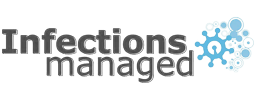MRSA
What is MRSA?
(methicillin-resistant Staphylococcus aureus)
Some staph bacteria are resistant to antibiotics. MRSA is a type of staph that is resistant to antibiotics called beta-lactams. Beta-lactam antibiotics include methicillin and other more common antibiotics such as oxacillin, penicillin and amoxicillin. While 25% to 30% of the population is colonized with staph, approximately 1% is colonized with MRSA.
What is community-associated MRSA (CA-MRSA)?
Staph and MRSA can cause illness in persons outside of hospitals and healthcare facilities. MRSA infections that are acquired by persons who have not been recently hospitalized or had a medical procedure (such as dialysis, surgery, catheters) are known as CA-MRSA infections. Staph or MRSA infections in the community are usually manifested as skin infections, such as pimples and boils, and occur in otherwise healthy people.
How common are staph and MRSA infections?
Staph bacteria are one of the most common causes of skin infection in the United States and are a common cause of pneumonia, surgical wound infections, and bloodstream infections. The majority of MRSA infections occur among patients in hospitals or other healthcare settings; however, it is becoming more common in the community setting.
What does a staph or MRSA infection look like?
Staph bacteria, including MRSA, can cause skin infections that may look like a pimple or boil and can be red, swollen, painful, or have pus or another drainage. More serious infections may cause pneumonia, bloodstream infections, or surgical wound infections.
How can I prevent staph or MRSA skin infections?
Practice good hygiene:
- Keep your hands clean by washing thoroughly with soap and water or using an alcohol-based hand sanitizer.
- Keep cuts and scrapes clean and covered with a bandage until healed.
- Avoid contact with other people’s wounds or bandages.
- Avoid sharing personal items such as towels, washcloths, razors, bars of soap, nail clippers, clothing, uniforms, and sheets.
